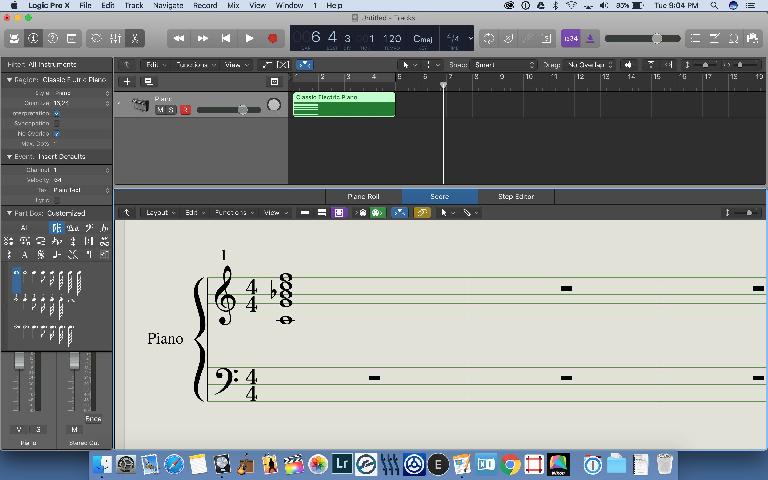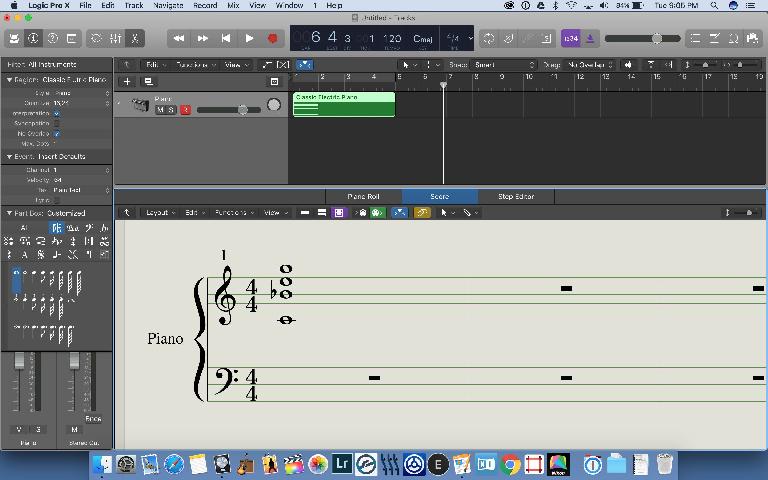Are you getting tired of using the same old chord types of major/minor/augmented/diminished? There are a lot more than four chord tones out there, and your standard gamut of 7th chords can get old pretty quick if you’re trying to compose a little ‘outside the box’. Here are five chord extensions to add to your 7th chords and amp up the harmonic content of your songs!
9th Chords
The first type of ninth chord you should try to build is a dominant one - it’s probably the most common. In order to create a simple dominant 9th chord, build a dominant 7th chord and add the 9th tone above the root. A C9 chord uses the notes C - E - G - Bb - D. It will give your harmonies a ‘jazzy’ tone. It’s not too dissonant, and can be used to give your tune a jazz-infused flair, but not too ‘out there’. A popular line that utilizes a dominant 9th chord is ‘I Got You (I Feel Good)’ by James Brown.
A great little ‘secret shortcut’ to creating a dominant 9th chord is to play a major triad, then superimpose that major triad’s minor V chord on top of it. So a C major triad with the notes C - E - G plus a G minor triad with the notes G - Bb - D will give you the sound you’re looking for.
Flat 9 Chords
A ‘flat 9’ chord is even more dominant and dissonant than a traditional 9th chord. If you take the 9th and lower it by a half step, you’ll get a really ‘compressed’ chord on the top. Actually, it’s a fully diminished chord if you think about it! An A7b9 chord contains the fundamental triad of A - C# - E, but then you add the G (dominant 7th) and a Bb (flat 9th). The C# - E - G - Bb portion of that chord is an actual C# diminished 7th chord, so it really stands out!
The flat 9 chord is nifty because it has 2 half steps in it that can resolve. In the example of our A7b9 chord, the C# really wants to resolve up to the D, and the Bb really wants to resolve down to the A. This way, you get a really nice palette of tones to choose from when constructing a solo of ‘places to go’!
Sharp 9 Chords
Sharp 9 chords are sometimes called ‘majner’ chords, because they contain both the major and minor 3rd of a chord. By raising the 9th tone, you get a note which is enharmonic to the minor third. Let’s use an E7#9 for this example. The fundamental triad is E - G# - B, add in the D as a 7th, then add in F double sharp as the ‘sharp 9’. The 9th is F#, so raising that up to F double sharp will make it (technically) a G. Now you’ve got a G# in the middle of the chord, and a G natural up at the top. This makes the chord very dissonant.
Guitarists like to refer to this one as the ‘Hendrix’ chord due to his use of it in tunes like ‘Purple Haze’ and ‘Foxy Lady’. Be careful when putting this one out in the world, its dissonance makes it really stand out from the crowd. It can be difficult for all but the most focused and well practiced of improvisers to create interesting and melodic phrases over the top of a #9 chord.
11th Chords
11th chords are true rarities in just about anything but jazz. A standard 11th chord has a note which is only a half step above the major third (the 11th is the same as the 4th degree of the scale), which makes it difficult to pull off and still sound diatonic and appropriate. Most uses of 11th chords leave out the major 3rd of the chord, and it winds up sound like a V chord with a minor 7th superimposed over the root of the 1 chord.
If you check out the Beatles tune ‘Sun King’ about 50 seconds or so in, you’ll hear what is often interpreted as a Gm7/C.
13th Chords
One of my favorite dominant harmonies, 13th chords span the style gamut. You can hear it in classical, rock, jazz, just about anything! If you’re looking for what note to use, the 13th is the same note as the 6th, but of course it’s utilized as an extension on top of the dominant 7th chord. If you’re starting with a simple dominant 7th chord based on a C, the 13th would be an ‘A’ above your 7th. One of the best aspects of the 13th is that it creates a major 7th (quite a dissonant interval) between the dominant 7th note and the 13th.
Herbie Hancock is a master of voicing 13th chords. Listen to just about any Herbie tune where he is comping and you’ll get a master class on how to utilize 13th chords in a unique way. I’m always inspired by how far apart and sparse his voicings are. To really get a handle on it, try playing the root in the bottom, then put the remaining notes in this order - 7th, 3rd, 13th. In the C13 example, you’re talking about C - Bb - E - A. With the notes really spread out, you’ll have a chord which is both dissonant, but also with plenty of space for other players to put their contributions in!
Foot Notes
You don’t need to be a jazz player to utilize chord extensions and complex harmonies. These chord modifications and extra notes are just the beginning - a great way to ‘dip your toes’ into the waters of harmonic dissonance. Don’t stop at using more complex chords, once you’ve got one in your song and you’re happy with its placement, try anchoring a portion of your melody on one of the chord extensions. Adding a little spotlight onto an extended chord tone can be a great way to call your listener’s attention to a specific part of your melody.







 © 2024 Ask.Audio
A NonLinear Educating Company
© 2024 Ask.Audio
A NonLinear Educating Company
Discussion
Want to join the discussion?
Create an account or login to get started!